Back to Basics: Round Structure and Timing
- Nick Hurzeler
- Sep 15, 2019
- 8 min read
So we have got a good amount of new players recently and that is super exciting, and I have wanted to cruse though the more basic rule to re-solidify some of my game knowledge so I figure kill two birds with one stone so we are going back to basics starring with round structure. Even more experienced players can learn a thing or two from a review of basic rules so stick around and let’s get started.
So a game consists of 6 rounds and each round consists of 4 phases the phases in order are Command Phase, Ship Phase, Squadron Phase, Status Phase so let’s start at the beginning the Command Phase.
Command Phase

So the command phase is one of simplest and most strait forward phases in the game this is the phases where players choose and assigned face down command dials to their ships. That is all that happens in the first phase of a round. A lot of people myself included think this happens at the end of a round while it is acutely the start of one, so remember this is the first phase of every round the command phase.
Ship Phase

The next phase is the Ship Phase this is where the meat of the game happens and this will be the longest section the ship phase has 3 steps reveal command dial, Attack, Execute Maneuver, however each of these steps has what I will term as “sub steps” don’t say I didn’t tell you this is where the meat of the game is.
Reveal Command Dial
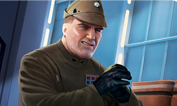
The first step in the Ship Phase is Reveal a command dial in other words pick a ship to activate. As soon as you reveal a dial you choose whether to spend the dial or gain the corresponding command token. You cannot wait to see if you “need” the command you must deiced what you are going to do with it the moment it is revealed.
Resolve Squadron/Repair Command
During the Reveal command dial step you have 2 sub steps after you reveal the dial if you would like to resolve a squadron command with ether a token or dial you must do so immediately after revealing you’re your dial, the same goes for the repair command, if you want wish to do both of these commands as they share the same timing you may deiced the order to resolve them in, but they both happen after the dial has been revealed and declared if it will be used for the command or kept as a token.
Attack Step

The next step is the Attack step so this step has 6 substeps in the rules reference guide but I think it really should be 8 because two steps kind of smash two steps together even though they do have different timings so for the purposes of illustrating timing I will be splitting it up into 8 substeps. I was going to make going over attack steps a separate wright up, but in order to illustrate timing of when commands would be spent, and so you understand when card effects trigger I need to go over all these substeps so we will go over it. So I will included the steps of attack resolution as sub steps of the attack phase.
During the Attack step you have the ship you are activating perform up to two attacks from different hull zones (three if you are a huge ship) now this is where the sub steps come in or the steps to attack Resolution (please note that these attack resolution steps apply to squadron attacks as well.)
Declare Target
pretty straight forward Declare a target that is inside the firing arc and at attack range of the attacking Hull zone. Declare the attacking and defending hull zone, and measure line of sight to the defender. In short pick your target make sure it’s in arc and you have line of sight.
Gather Dice pool
so this one of the steps that was smashed into another step but I think it’s worth splitting to show you gather dice from your armament before rolling them, and in cases where you have no dice to gather due to obstruction or some other game effect you cannot roll dice and the attack ends here.
Roll attack dice
this is a simple step after you have gathered the dice from your armament you roll them super simple straight forward.
Resolve Attack Effects
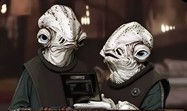
this is the step where the action starts to happen during this step you spend accuracies icons and resolve effects that modify dice. So how are die modified they can be Rerolled, added, Changed, Spent, or Canceled, any card that has these key words happen at this time, Ordinance experts, Slaved turrets, leading shots etc. This is also the time when you would spend your concentrate fire command to “add” or “Reroll” dice.
Spend Defense Tokens
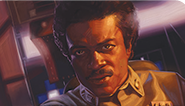
it is not as straight forward as some may think, but in simple terms the defender can spend one or more of its defense tokens. It can never spend two tokens of the same type. The important thing to note is this happens before critical effects resolve and before damage is even applied to the ship, giving tokens that cancel or modify dice in some way a way to get rid of certain dice results before their effect happens such as criticals or just applying the damage on their facing this is sometimes overlooked but its timing is very important. The Evade, Scatter, and Contain tokens are completely resolved during this step Brace and Redirect are spent, but not resolved until a later step.
Resolve Critical effects

So this was smashed into our resolve damage step, but I think it is important to know that this happens before damage is applied and before the brace and redirect token effects are resolved so there is no way to negate this effect outside of a contain, or contain with damage control officer for special crits. So with Assault proton torpedoes (APTs) the face up is dealt at this time the shield drain for Heavy Ion Emplacements happens now. In most cases this does not matter, but in some cases can be critical (put unintended) such as when a ship with APT is attacking a hull zone with zero shields and the face up crit is you cannot redirect from hull zones that have zero shields, well now the redirect you spend cannot redirect because of this critical effect. However in most cases the importance of this is more so that the damage given from a critical effect can’t be braced or redirected because the timing is different this is why critical effects are a great way to bypass defense tokens.
To address a few questions I get asked a lot is if the critical effect resolve in this step how is it the standard critical effect resolves when damage is applied, It is because of how the standard critical effect is worded. “If the defender is dealt at least one damage card, (when damage is applied) deal the first damage card faceup”. Also in addition you don’t “Spend” your crit when resolving a critical effect. If you have an attack pool of 5 damage and one is a crit and you have ATPs you deal the faceup card to the defender and then once we apply damage you still have 5 damage think of it as you have a pool of 5 damage with a critical effect that effect is resolved during this sub step. Anyways we have been talking a lot about applying damage so lets finally get to it.
Resolve Damage
The defender suffers damage equal to the number of hit icons. If both the attacker and defender are ships, the number of crit icons is added to the damage total. So pretty simple now after the damage has been totaled if a brace token was spent its effect resolves now. This is important it keeps interactions like two red dice one with a double hit and one with a single hit, brace to two evade the double for zero damage, it is important to remember brace does not resolve until the damage is totaled during the resolve damage step. Then finally the damage is applied to the ship and if a redirect was spent it resolves its effect now and its effect is slightly more intricate than most people think “ The defender chooses one of its hull zones adjacent to the defending hull zone. When the defender suffers damage from this attack it may suffer any amount of damage on the chosen zone’s shields (up to the shields reaming on that zone before it must suffer the remaining damage on the defending hull zone.” So no if you wanted to you could not redirect damage to your hull to keep shields on a certain facing. So that is it for this step its on to the last sub-step in the attack step and this one will be fast.
Declare additional Squadron Target

If the attacker is a ship and the defender was a squadron, the attacker can declare another enemy squadron that s within the firing arc and at attack range of the attacking hull zones the new defender repeat these steps against the new defender. Each enemy squadron can be targeted once per attack. Fairly straight forward step that only applies when attacking squadrons, and that is the end of all the sup-steps of attack resolution and that brings us to the end of the Attack step in the Ship Phase.Now on to the last step of the ship phase Execute Maneuver step.
Execute Maneuver Step
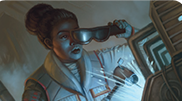
this has 2 sub-steps but one is really where all the action happens and the other is the resolution of that action. So lets start with the sub-step Determine Course step.
Determine Course
During the Determine Course you will straighten the maneuver tool, then click the joints of the maneuver tool a number of times in either direction up to the corresponding yaw values indicated on the ships speed chart for the current speed. This is also the step where you would spend your navigate command to increases speed and or yaw.
Movie ship
this is the other step in the ship phase and it is super straight forward lock in the maneuver tool and move the ship you have the stipulations that you can’t overlap the tool, and if you complete the maneuver overlapping a ship you need to attempt to complete the maneuver as much as possible however while doing that you can overlap the tool, you will also take a damage for ramming a ship. If you overlap squadrons your opponent will place them touching the base of your ship.
That brings us to the end of the ship phase I know it was a lot thanks for sticking with it, but the ship phase like I said is where the meat of the game is. We have two more Phases left but trust me they will go by in a blink of an eye.
Squadron Phase

Players take turns in Iniative order activating two of their unactivaed squadrons, one at a time, If a player has only one unactivated squadron he must activate that squadron. If he has no unactivated squadrons, he must pass his turn. When a squadron activates, it may ether move or attack, not both.
Really the only thing I want to touch on in this section is the one at a time rule and this rule is even true when activating squadrons in the ship phase. You resolve each squadron activation completely one at a time so you can’t move all 4 tie fighters then attack with each tie fighters it needs to be done one at a time meaning at least one tie wont gain the swarm keyword if they are moving into engagement range, so the one at a time thing can matter so it needs to be done that way. On to the very last Phase of a game round.
Status Phase
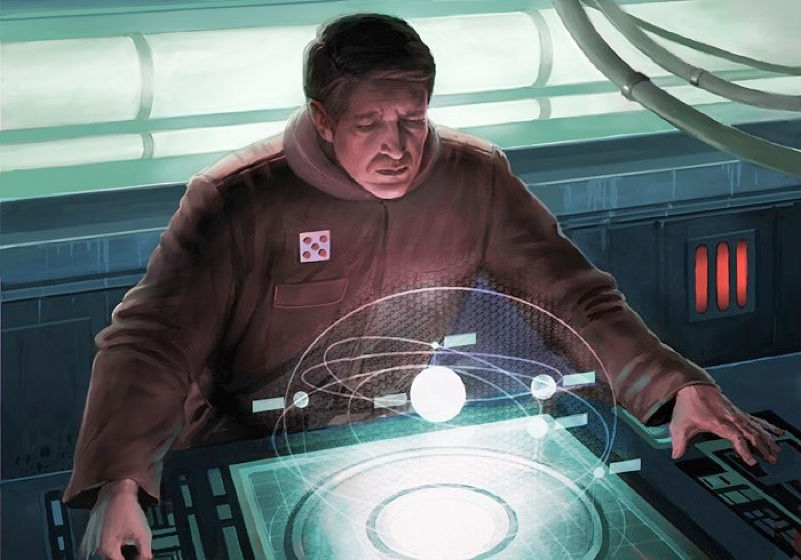
The Status Phase has 4 steps that are very straight forward so let’s just dive in.
Ready Defense Tokens
Flip each exhausted defense token to its readied side.
Ready Upgrade Cards
Rotate each exhausted card to it readied position.
Flip Initiative Token
Flip the initiative token.
Place round token
place the round token with the next highest number next to the play area.
And that is a round of armada, there is a lot more to a round that is sometimes forgotten about, I hope this helps you understand timing in rounds and also attacks, and also when some of your upgrade cards would resolve. Even if you are an experienced player that knows this like the back of your hand it is always good to have a refresher. I will do more back to basics wright ups as other topics come to mind or if they are requested. I just hope this was helpful and informative to the many newer players I have seen joining the game. By get a stronger grasp on how a round unfolds, can really help you understand more advanced mechanics and also why something is good vs bad, but until next time have a great week!








Comments